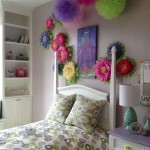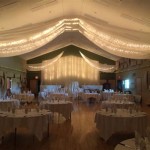Decorating Living Room With Grey Walls
Grey has become a dominant neutral in interior design, replacing beige as the go-to foundation for a sophisticated and versatile living space. Decorating a living room with grey walls presents a blank canvas, allowing for exploration of diverse styles, colors, and textures. The key to successfully navigating this design choice lies in understanding the nuances of grey itself, and how it interacts with other elements within the room.
The appeal of grey stems from its inherent ability to adapt to different aesthetics. From modern minimalist to rustic farmhouse, grey provides a grounding presence that can either blend seamlessly into the background or serve as a subtle statement. Success in decorating around grey walls depends on a careful consideration of factors such as the specific shade of grey, the amount of natural light available, and the desired overall ambiance.
Understanding the Nuances of Grey
Grey is not a monolithic color; it exists on a spectrum with a wide array of undertones. These undertones are crucial in determining how the grey walls will interact with other colors and influence the overall mood of the room. Grey can lean towards warm (with hints of red, brown, or yellow) or cool (with hints of blue or green). Selecting the right undertone is paramount to creating a cohesive and harmonious space.
Warm grey walls, often referred to as "greige" due to their beige undertones, tend to create a cozier and more inviting atmosphere. They pair well with natural materials like wood, leather, and warm-toned metals like brass and copper. Warm greys are particularly effective in spaces with limited natural light, as they help to prevent the room from feeling cold or sterile.
Cool grey walls, on the other hand, evoke a sense of calm and sophistication. They work exceptionally well in modern and minimalist settings, lending a crisp and clean aesthetic. Cool greys complement cool-toned metals like silver and chrome, as well as glass and concrete. These shades are ideal for rooms with ample natural light, as they can enhance the brightness and create a feeling of spaciousness.
The choice between warm and cool grey should align with the desired style and the existing lighting conditions. Testing paint samples on the walls and observing them under different lighting conditions throughout the day is crucial for making an informed decision. This process helps to reveal the true undertones of the grey and how they interact with the room's existing features.
Beyond warm and cool undertones, the saturation of the grey also plays a significant role. A highly saturated grey will appear bolder and more dramatic, while a desaturated grey will be softer and more subtle. Lighter greys tend to make a room feel larger and brighter, while darker greys can create a more intimate and dramatic ambiance. The saturation level should be carefully considered in relation to the size of the room and the desired level of visual impact.
Color Palette Considerations
Once the specific shade of grey has been chosen, the next step involves selecting a complementary color palette. Grey's neutrality allows it to pair well with a wide range of colors, but certain combinations are particularly effective in creating specific moods and styles. The key is to consider the undertones of the grey and select colors that either complement or contrast them in a harmonious way.
For warm grey walls, consider incorporating earthy tones such as browns, greens, and oranges. These colors create a sense of warmth and connection to nature. Accents of mustard yellow or burnt orange can add pops of vibrancy and visual interest. Soft blues and greens can also work well with warm grey, creating a calming and inviting atmosphere.
Cool grey walls pair beautifully with blues, purples, and greens. These colors enhance the cool and sophisticated feel of the space. Accents of silver, chrome, and glass can further accentuate the modern aesthetic. Pops of bright colors like fuchsia or turquoise can add a touch of energy and personality to the room. A monochromatic palette using different shades of grey, from light to dark, can also be very effective in creating a sophisticated and minimalist look.
Regardless of the specific color palette chosen, maintaining a balance is crucial. Avoid overwhelming the space with too many colors or patterns. Instead, focus on creating a cohesive and harmonious scheme that allows the grey walls to serve as a unifying backdrop. Consider using the 60-30-10 rule: 60% of the room should be the dominant color (grey in this case), 30% should be a secondary color, and 10% should be an accent color. This rule helps to create a balanced and visually appealing space.
The choice of textiles and accessories also plays a crucial role in defining the color palette. Rugs, curtains, cushions, and artwork can all be used to introduce color and texture into the room. Consider using different patterns and textures to add visual interest and depth. For example, a textured rug can add warmth and coziness to a room with cool grey walls, while velvet cushions can add a touch of luxury and sophistication.
Incorporating Texture and Light
Texture and light are essential elements in decorating a living room with grey walls. They add depth, dimension, and visual interest to the space. Without texture and light, a grey room can feel flat and lifeless. Therefore, carefully considering these elements is crucial for creating a welcoming and inviting atmosphere.
Texture can be introduced through a variety of materials, including fabrics, rugs, furniture, and wall coverings. Consider incorporating natural textures such as wood, stone, and linen to add warmth and character to the room. A textured rug can help to define a seating area and add a sense of coziness. Throw pillows with different textures, such as velvet, faux fur, or knit, can add visual interest to the sofa. Artwork with textured surfaces can also enhance the overall aesthetic of the room.
The type of furniture chosen can also contribute to the textural landscape. A leather sofa offers a smooth, sophisticated texture, while a woven armchair adds a more relaxed and tactile element. Mixing and matching different textures is key to creating a visually dynamic and engaging space. A combination of smooth and rough textures can add depth and complexity to the room, preventing it from feeling too uniform or predictable.
Light is another crucial element in decorating a living room with grey walls. Grey can absorb light, so it is important to ensure that the room is well-lit. Natural light is always the best option, but if the room lacks natural light, artificial lighting can be used to compensate. Consider using a combination of ambient, task, and accent lighting to create a well-lit and inviting space.
Ambient lighting provides overall illumination to the room and can be achieved through ceiling fixtures, chandeliers, or recessed lighting. Task lighting provides focused light for specific activities, such as reading or working. This can be achieved through table lamps, floor lamps, or sconces. Accent lighting highlights specific features of the room, such as artwork or architectural details. This can be achieved through spotlights, picture lights, or uplighting.
The choice of lighting fixtures can also contribute to the overall aesthetic of the room. Consider using fixtures with different finishes and materials to add visual interest. For example, a brass chandelier can add a touch of glamour to a room with cool grey walls, while a wooden floor lamp can add warmth and character to a room with warm grey walls. Dimmers can also be used to adjust the intensity of the lighting, allowing for flexibility in creating different moods and atmospheres.
Mirrors can also be used to enhance the light in a room with grey walls. Mirrors reflect light and can make a room feel larger and brighter. Placing a mirror opposite a window can maximize the amount of natural light in the room. Mirrors can also be used to highlight specific features of the room, such as artwork or architectural details.
By carefully considering texture and light, one creates a living room with grey walls that is both stylish and inviting. The interplay of these elements adds depth, dimension, and visual interest to the space, transforming a potentially monotonous room into a captivating and comfortable sanctuary.

Chic Grey Living Room With Clean Lines Walls Inspiration

35 Best Gray Living Room Ideas How To Use Paint And Decor In Rooms

13 Contrasting Living Rooms With Dark Grey Walls Coco Lapine Designcoco Design

Grey Walls In A Scandinavian Interior Coco Lapine Designcoco Design

35 Best Gray Living Room Ideas How To Use Paint And Decor In Rooms

Pin By James Mudd On Living Room In 2025 Grey Walls Dark

Painting And Decorating Is Grey Dead Expert Advice

35 Stylish Gray Rooms Decorating With

13 Contrasting Living Rooms With Dark Grey Walls Coco Lapine Designcoco Design

Gray Living Room Ideas 15 For Decor
Related Posts







